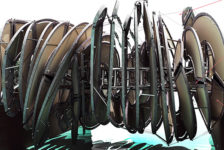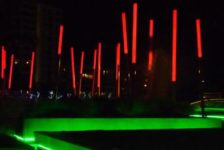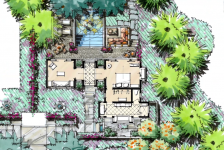Image: Mosier Creek, OR
The editors of Natural Home Magazine have compiled a comprehensive list of what they agree to be the best examples of green neighborhood designs. While the buildings in these developments tend to be quite energy efficient, landscape designers and planners also had a huge part in the ultimate success of how they all work seamlessly together. The list is riddled with expansive pedestrian and bike paths, community veggie gardens, and eco-conscious stormwater systems and natural habitat restoration programs.
The majority of these neighborhoods have become certified in either a LEED rating system or a under a number of local green building programs. While LEED may have focused its efforts on greening building systems in its first decade or so, the USGBC has grown to encompass whole housing developments and their connectivity to local communities. It is becoming more and more unlikely for planners to design a building complex or neighborhood that falls under the “middle of nowhere” conundrum.
The connectivity of spaces is something that really draws me to these neighborhoods. In some ways it’s like going back to when the neighborhood was a multi-functional place not just to call your home, but to also do your grocery shopping, playing, and eating without using fossil fuels to get around. Places like Beacon Hill in Boston, a city that is sometimes even called “a city of neighborhoods”, where pocket parks and playgrounds provide little urban oases of green space. Philadelphia is doing their part by sticking to their Greenworks Plan, which among other targets is planning to bring local food within 10 minutes of 75% of residents by 2015, and increasing tree coverage toward 30% in all neighborhoods by 2025.
See the list here: America’s Top 10 Best Green-Built Neighborhoods
Published in Blog







